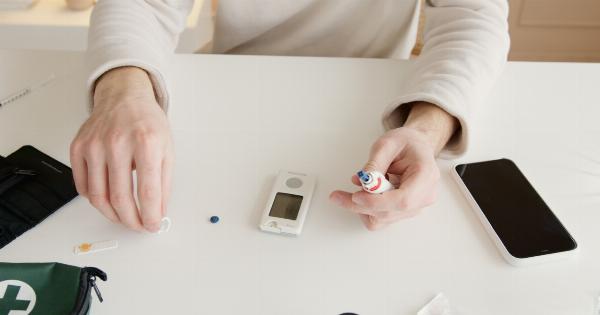Diabetes is a growing health concern, and it can affect people of all ages, including children. Recognizing the early signs of diabetes in kids is crucial for timely diagnosis and management.
In this article, we will discuss the common symptoms and provide guidance on how to identify if your child may be at risk for diabetes.
1. Increased Thirst and Urination
One of the earliest signs of diabetes in children is excessive thirst and frequent urination. If your child constantly feels thirsty and has to use the washroom more often than usual, it could be a potential indicator of diabetes.
This symptom occurs because the body tries to eliminate excess sugar through urination, leading to dehydration and increased fluid intake.
2. Extreme Fatigue
If your child appears excessively tired, fatigued, or lethargic even after adequate rest, it might be a cause for concern. When a child has diabetes, the body’s cells do not receive enough glucose due to inadequate insulin.
Consequently, the body lacks energy, leading to persistent tiredness and lack of enthusiasm.
3. Unexplained Weight Loss
Sudden and unexplained weight loss is another warning sign of diabetes in kids. Despite having a good appetite, children with diabetes may experience weight loss due to the body being unable to effectively utilize and store glucose.
This occurs because the body starts breaking down fat and muscle tissue for energy when glucose is not available.
4. Increased Hunger
A spike in appetite, especially after meals, can indicate diabetes in children. When the body cannot use glucose for energy, it sends signals to the brain that it needs more fuel.
As a result, the child may frequently feel hungry and can consume larger portions of food than usual.
5. Slow Wound Healing
Diabetes can also impair the body’s ability to heal wounds properly. If you notice that your child’s cuts, bruises, or sores are taking a longer time to heal than usual, it may be a symptom of diabetes.
High blood sugar levels interfere with the body’s functioning and weaken the immune system, making it harder for wounds to heal effectively.
6. Frequent Infections
Children with diabetes are more susceptible to infections due to weakened immune responses.
If your child frequently experiences infections, such as urinary tract infections, yeast infections, or respiratory infections, it could be an indication of diabetes. Elevated blood sugar levels create an ideal environment for bacteria and fungi to thrive.
7. Blurred Vision
Diabetes can cause fluctuations in blood sugar levels, which can affect the eyes’ ability to focus. If your child complains of blurred vision or has difficulty seeing objects clearly, it could be a sign of diabetes.
High blood sugar levels can change the shape of the lens in the eye, leading to temporary vision problems.
8. Irritability and Mood Swings
Children with diabetes may exhibit irritability, mood swings, or persistent crankiness. Fluctuating blood sugar levels can impact their mood and behavior.
If your child’s temperament seems noticeably different or they experience unexplained mood swings, it’s essential to consider the possibility of diabetes.
9. Sweet or Fruity Breath
If you notice a sweet or fruity odor on your child’s breath, it could be a sign of diabetic ketoacidosis (DKA). DKA occurs when the body does not have enough insulin, leading to the breakdown of fat for energy.
This process produces ketones, resulting in an acetone-like smell on the breath.
10. Family History of Diabetes
If you have a family history of diabetes, your child may have an increased risk of developing the condition. Genetics play a significant role in determining the likelihood of developing diabetes.
If you know that diabetes runs in your family, it’s crucial to be vigilant about monitoring your child’s health and watching for any potential signs or symptoms.
Recognizing the early signs of diabetes in kids can help ensure prompt diagnosis and treatment, reducing the risk of complications.
If your child exhibits any of these symptoms, it is important to consult with a healthcare professional for further evaluation and guidance.






























